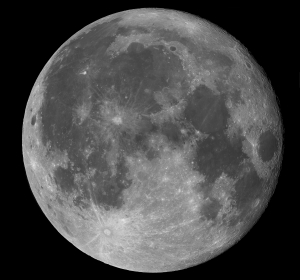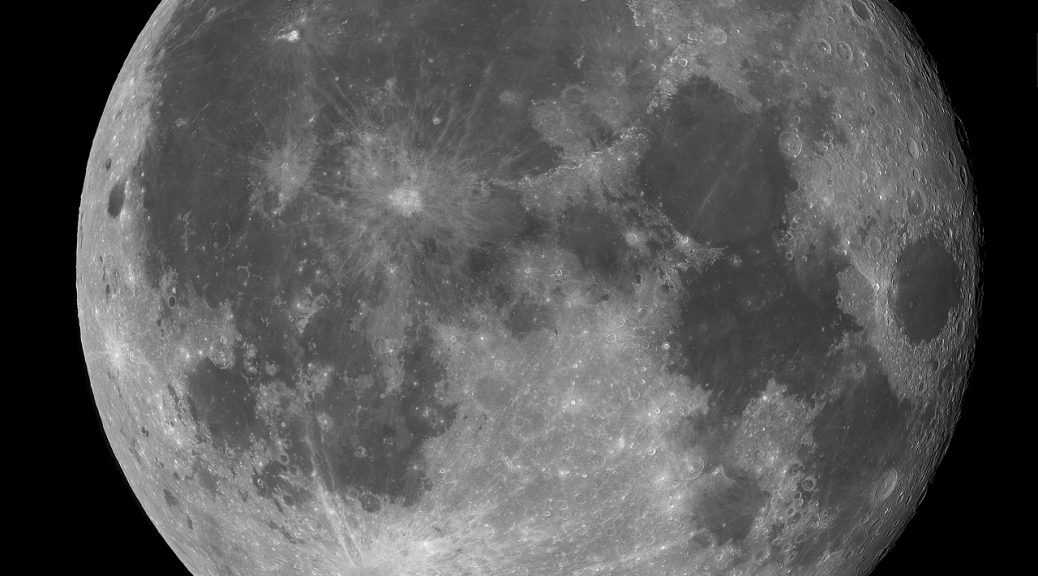The 4th November 2017 gave me clear skies with a very bright moon in the sky – this gave me good opportunity to use the rebuilt 14″ Newtonian scope for some imaging work, now that the scope truss tubes have been correctly milled down to the right length.
Using the ASI120MM camera with a 742nm nr-IR filter, I imaged the moon at its native focal length (1582mm), using Firecapture to grab the video. The data totalled 56GB in all!
The finished mosaic consists of 18 frames: each of these was the result of stacking the best 12% (quality-wise) of 3000 frames. Each of the frames were 0.18ms each (with gain set to 54), and were captured at around 31 frames per second. To try to avoid issues with exposure mismatch, all the exposure details were kept identical throughout the 36 minutes or so it took to complete the whole set of videos across the face of the moon.

The videos captured were aligned and stacked using Autostakkert2, and each of the stacked images were processed using identical wavelet settings in Registax6.
To create the mosaic itself, I took all the images into Microsoft Image Composite Editor (ICE) and let it get on with the process of aligning and stitching the images together. It did a remarkably good job! I had also tried the Photomerge function in CS4, but ICE did a better job here: Photomerge was good but left a couple of slight merging artifacts – misalignments on the limb, mostly.
Final processing took place in Photoshop (smart sharpening, levels, curves, etc) with the result being a 20Mpixel image weighing in at 7+ MB for a high quality jpg. Here, I’ve reduced the image to 80% of the original resolution to aid web viewing!
Images were taken starting at 2215UT from West Oxfordshire, UK.
![]() Nov 2017 Lunar Mosaic by Graeme Coates is licensed under a Creative Commons Attribution-NonCommercial-ShareAlike 4.0 International License.
Nov 2017 Lunar Mosaic by Graeme Coates is licensed under a Creative Commons Attribution-NonCommercial-ShareAlike 4.0 International License.
